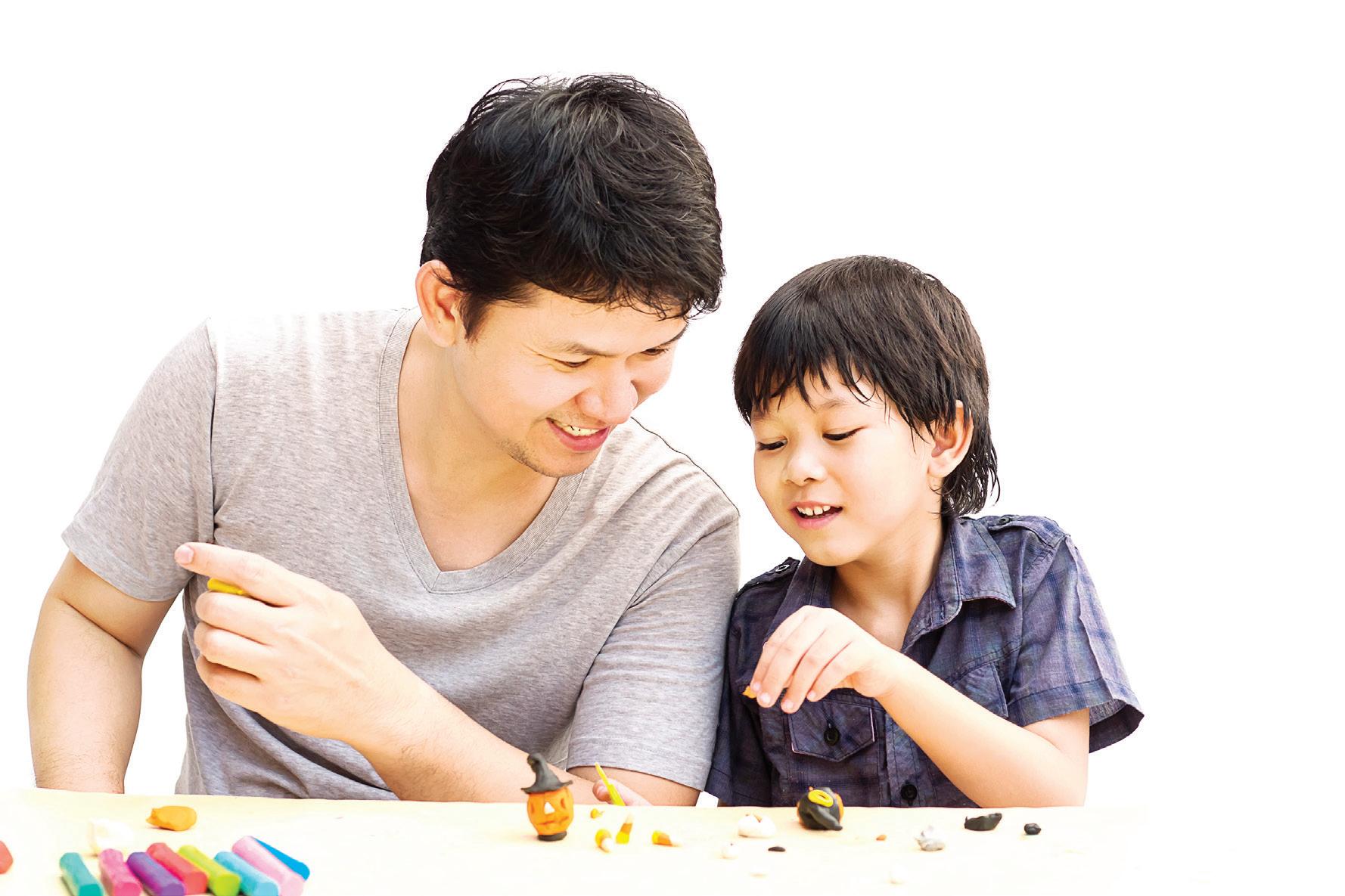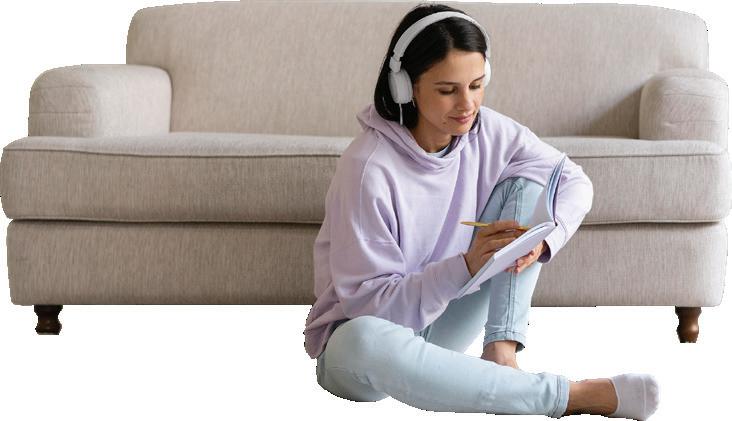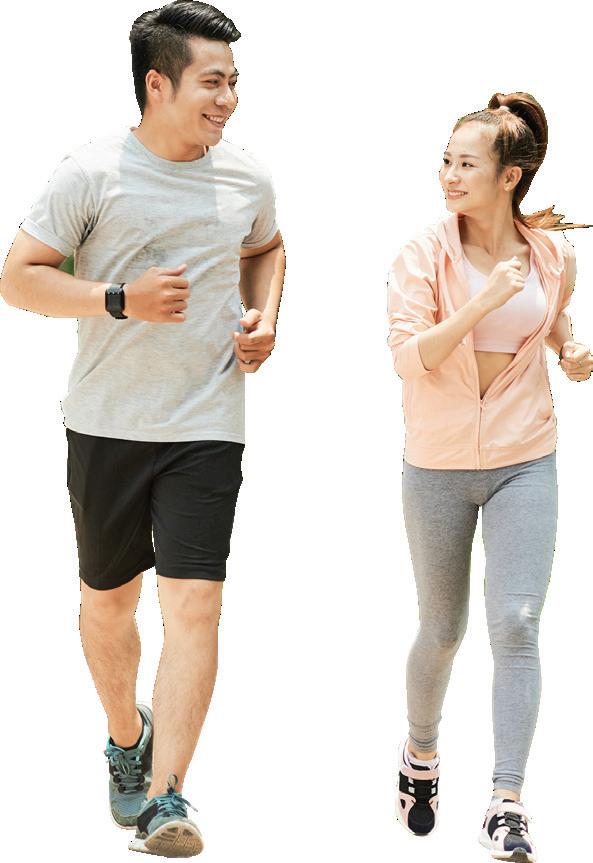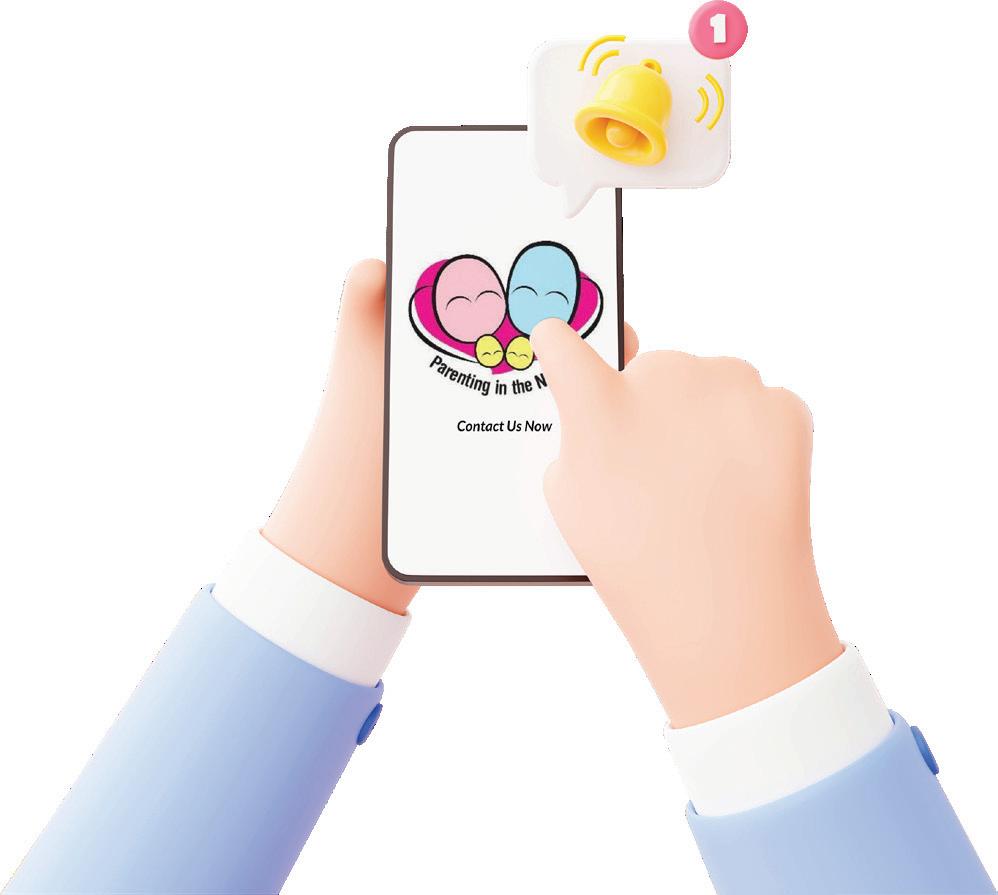

Mindfulness at Home
Mind Your Breath
Mind-Full or Mindful
Wellness Journaling
Quarterly Publication Issue 1 | www.thenewageparents.com
MINDFULNESS • WELL-BEING • HOLISTIC LIVING
Mindful
Parent Find Peace while parenting
The more the easier you practice, it gets! “ ”

Mindfulness has been a rising topic in the recent decade. With rapid changes and challenges in our daily lives, mindful practices can help parents achieve a sense of balance and well-being. As parents practice mindfulness, they are more likely to feel happier, calmer and more equipped to face the challenging moments that come along the way.
Incorporating mindful practices into our lives does not guarantee constant positivity. It emphasizes on kindness towards ourselves and others, allowing us the time and space to acknowledge and accept our emotions, even when things do not go as planned.
There are many practices we can include into our routine to improve our lives holistically. May these little snippets of mindful practices bring inspiration to you and your outlook of life.
Mindfulness Positive for ImpactsFamilies
What is Mindfulness?
Mindfulness is paying attention to what is happening at the very moment. It is paying attention to how we feel, what we hear, see or smell. It is also slowing down to gain better understanding before responding to events. Mindfulness practice reduces activity in the part of our brain called the amygdala. The amygdala plays the central role in activating our stress response.

How mindfulness help parents?
1. Reduce stress and boost general wellbeing
• Less tense response
• More relaxed when attending to daily routine
• Being more aware of oneself and taking time for self-care
3. Deepen sense of empathy
• Reduce judgement to situations
• Allow us to hold space for our children during difficult times
• Demonstrate kindness towards people around us
2. Reduce emotion reactivity
• Develop self-regulation and flexibility
• Allow us to better guide our children in times of big emotions
• Being able to demonstrate how to regulate emotions to our children
4. Encourages positive and loving interactions
• Deepen connections with our children
• Build sense of trust between us and our children
Introducing the concept of mindfulness to children
When we do so, we are providing our children with the tools to gain more understanding about their emotions, increase their ability to focus and improve executive functioning such as problem-solving and reasoning while also building resilience towards stress.
Children will be able to
• Be more comfortable to share about their own emotions.
• Be equipped with tools to respond during challenging situations.
• Utilise their left brain more efficiently which helps in logical thinking.
• Develop better social skills through active listening.
• Develop a stronger sense of belonging as they work on mindfulness practices along with their parents.
Parenting will always present challenges, but we can change the way we look at them. Approaching parenting with mindfulness allows us to be more patient and less judgemental with ourselves and our children.

Mind-Full Mindful or
Findings from a survey conducted by the National University of Singapore in 2022 shows that Singaporeans have become less happy, enjoy life less and have felt a decreased sense of achievement over the last 5 years.
In a fast-paced society, we are constantly adding things to our to-do list and thinking about what comes next. In a pursuit of betterment, we sometimes end up being consumed by stress leading to reduced productivity, unhappiness and a state of constant mind-full.
What is…
Mind-Full
• Worried about the future
• Dwelling on the past
• Overwhelmed by distractions
Being Mindful
• Focused on right now
• Appreciating each experience
• Aware of own thoughts and feelings
• Better observation on surroundings
Reduce stress and boost general well-being
Mindfulness can lead to less intense stress responses. This brings numerous health benefits such as lowering your blood pressure and strengthening your immune system.
Reduce emotional reactivity
As we take time to be more mindful about our emotions, we learn to pause before responding to triggers. Taking a moment to pause and reflect before choosing the best response can help reduce impulsive reactions.
Deepen sense of empathy
When we are more attuned to our thoughts and feelings, we demonstrate deeper empathy towards ourselves and others. This allows us to be more compassionate towards people around us.
Benefits
of mindfulness practice
How?
1-minute mindfulness practice
Pause and spend time during the day asking “Am I mindful or mind-full now?” Follow up and ask yourself “How can I support myself at this moment to be more mindful?”
Deep listening exercise
Listen to close sounds, like your own breath. Then listen for sounds that are further away (music in the room, people talking). Close your eyes and listen to these sounds again for about 1 – 2 minutes.
Keeping a gratitude journal
There are many things in our lives that we might be grateful for. Taking the effort to think back about the day or week and list down 5 things you are thankful for. This helps to bring attention to the blessings in our lives and keep perspective balanced during difficult times.

Deep Better for Breathing Well-being

Deep breathing goes by many other names such as diaphragmatic breathing, abdominal breathing or belly breathing. In moments of anger, frustrations or distress, we often take short, shallow breaths which makes us feel anxious and it also depletes our energy quickly. Slow and deep breathing encourages full oxygen exchange in our bodies. The air coming through our nose will fill our lungs, causing our lower belly to rise.
Here are some other ways deep breathing benefits our bodies:
Lower blood pressure
Deep breathing does not replace medication for elevated blood pressure but is a good supplement on top of regular exercise, healthier diet and adequate sleep. .
Manage symptoms of anxiety
Taking slow, deep breaths can disrupt acute reactions towards stress. Having time to pause before responding can alter our ways of responding towards triggers.
Practicing Deep Breathing
Find a comfortable position (this may be sitting down, laying down or even standing up)
Place one hand or our chest and the other hand on your belly.
Exhale slowly through pursed lips.
Improve focus
As we concentrate our thoughts on our breaths, we are reducing distracting thoughts which leads to a calmer mind.
Breathe through your nose, letting it flow down into your abdomen. Feel your belly expand.
Repeat Step 3 and 4 for 3 minutes.
STEP 1
STEP 2 STEP 3
STEP 4 3 min
STEP 5
Here are some variations to deep breathing to continue working on improving overall well-being.
5-5 Technique
Breathe in and retain breath for a count of 5. Exhale through your nose for a count of 5. Repeat for a couple of minutes.
Box Breathing Technique
Box breathing technique forces our minds to quieten and focus on our bodies. You can do so by repeating the following steps. Breathe in for 4 counts. Hold breath for 4 counts. Exhale for 4 counts. Hold breath for 4 counts.
Progressive Muscle Relaxation
Deep breathing and progressive muscle relaxation can be integrated to tense and relax different muscle groups one at a time. As you breathe in, squeeze toes. As you exhale, relax them. Move on to different muscles in the body from bottom to top (toes, leg, stomach, hand, arm, shoulder, face, eyes).
Reference: Medical News Today and Health Hub

Starting Wellness a Journal
What is a wellness journal?
Keeping a wellness journal is an excellent mindfulness practice. It allows you to keep track of your habits and record your thoughts and feelings, leading to increased self-awareness. Writing in a journal helps to stop the habit of dwelling on negative thoughts and provide opportunities to reflect on daily routine and events fostering self-awareness and promoting a more positive mindset. There are many variations of wellness journals available including ready-made versions which you can pen on. Here are some simple steps you can take to begin your wellness journal.

Step 1:
Find a journal or a simple notebook that you like. Your decision may be affected by how often you will reach out to the journal (e.g. would you bring it out daily or keep it near your bed).
Step 2:
Decide what you would like to record. Identifying the goal of your wellness journal helps to narrow down on what to record.
Step 3:
Make it a habit by setting a few minutes each day to record in your journal. You can do so before turning in for the night to allow yourself some time to reflect on the day.
What to include in a wellness journal?
A wellness journal aims to improve your overall well-being and here are some components which you may want to consider.
“I am grateful for..”
Making a conscious effort to identify things that you are grateful for encourages you to focus on what you have. Regularly looking out for things that you appreciate can train your mind to look at things positively.
“What was challenging today? How does it make me feel?”
Journaling is not just about documenting good days but also embracing the bad ones. Taking time to hold space for yourself and reflect on your feelings is a crucial part of maintaining wellness.
“What did I eat today?”
Writing about what you eat helps you become more aware of what you are nourishing your body with. Over time, you may also observe how food may affect your overall mood.
Inspiration
Including mantras, inspirational quotes that align with your wellness goal creates an uplifting atmosphere which you can look back at regularly.
“ If you have good thoughts they will shine out of your face like sunbeams and you will always look lovely,”
– Roald Dahl
Writing should be a pleasant experience which you look forward to each day and not a chore. Kick start your journaling with a realistic schedule and goal. Observe how it can improve your life!
Fitness Tracking
Recording each time you work out spur yourself to continue the habit of keeping your fitness level.


Yi Jun
Email : yijun@newageconsulting.com.sg
Mobile : 9433 4021
Charlene Go
Email : charlene@newageconsulting.com.sg
Mobile : 8864 6618
Email: advertise@thenewageparents.com


Interested in collaborating or to learn more about our platforms? Feel free to reach out to us for further information.
Find Us On












